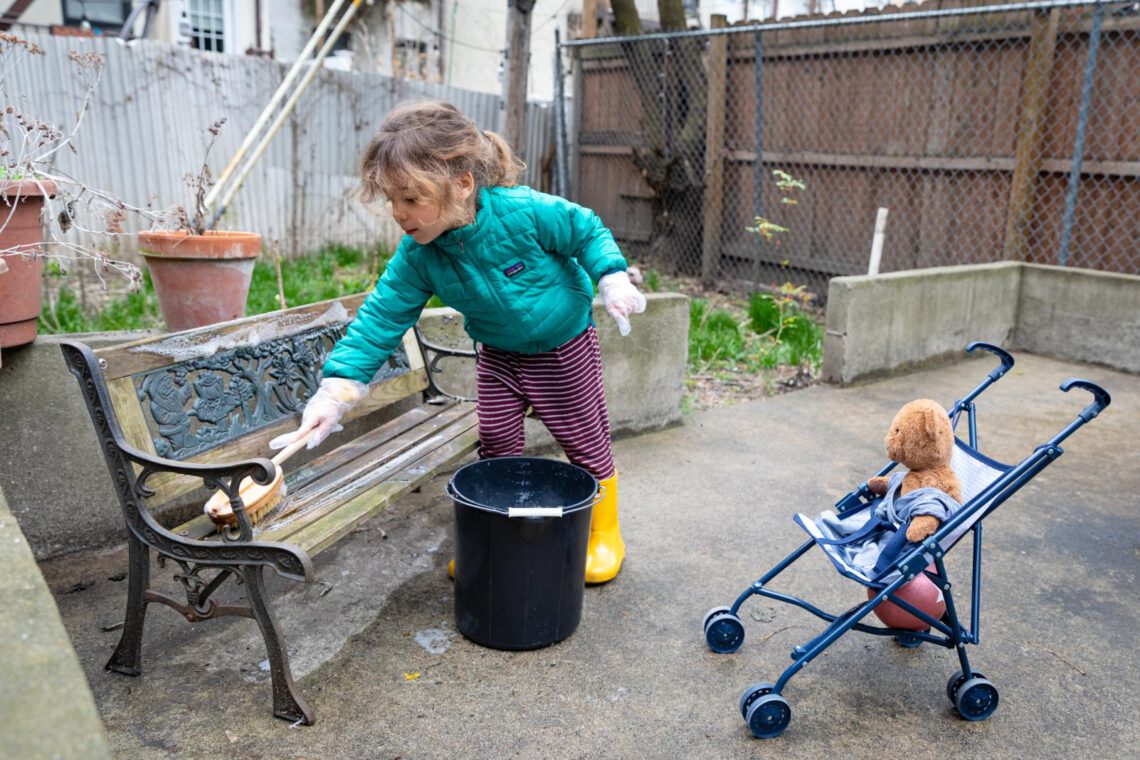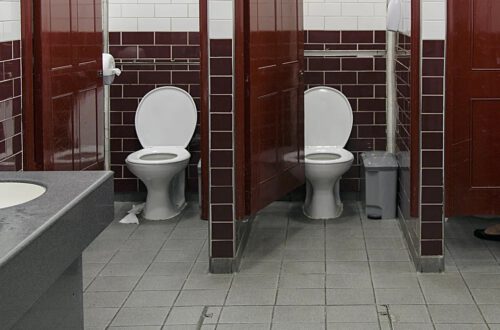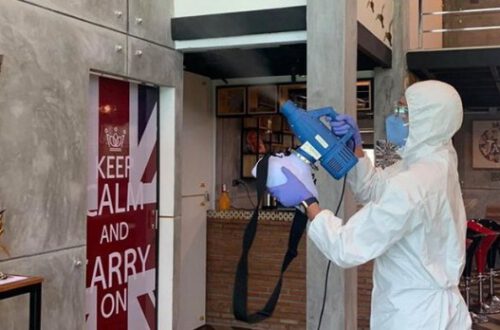
Cleaning and hygiene tips to help keep the COVID-19 virus out of your home
While research into the COVID-19 virus is ongoing, we know the virus is transmitted through direct contact with respiratory droplets of an infected person (through coughing and sneezing), and touching surfaces contaminated with the virus. The virus may survive on surfaces for a few hours up to several days. The good news? Simple disinfectants can kill it. Now what does this mean for your home?
To give parents a helping hand, we compiled the latest expert information on what is known about COVID-19 and tips to help keep it out of your home.
Cleaning and hygiene tips to protect against COVID-19 Personal hygiene Cleaning around the home Cleaning clothes Handling and preparing food
Get the latest information and guidance on the COVID-19 virus
coronavirus-covid-19-cleaning-home-wash-hands-030420 UNICEF/UNI310642/Viet Hung Personal hygiene
Simple hygiene measures can help protect your family’s health and everyone else’s.
Don’t touch your face
Avoid touching your eyes, nose and mouth.
Don’t cough or sneeze into your hands
Cover your mouth and nose with your elbow or tissue when coughing or sneezing. Dispose of used tissue immediately.
Keep your distance
Maintain a distance of at least 1 meter (3 feet) from people who are coughing or sneezing.
Wash, wash, wash your hands
Yes, you’re hearing it everywhere, because it’s the best line of defence. Wash hands frequently with soap and water for at least 20-30 seconds.
An easy way to time it with your children is by singing the full happy birthday song, twice.
Make sure to wash hands after you blow your nose, sneeze into a tissue, use the restroom, when you leave and return to your home, before preparing or eating food, applying make-up, handling contact lenses etc.
If using a hand sanitizer ensure that it contains at least 60 per cent alcohol, ensure coverage on all parts of the hands and rub hands together for 20-30 seconds until hands feel dry. If hands are visibly dirty, always wash hands with soap and water.
Did you know? Cold water and warm water are equally effective at killing germs and viruses — as long as you use soap and wash your hands the right way!
Everything you need to know about washing your hands to protect against the COVID-19 virus
Coronavirus (COVID-19): Cleaning and disinfecting tips UNICEF/UNI316641/Mohamed Cleaning around the home
Cleaning and disinfecting high-touch surfaces in your home regularly is an important precaution to lower the risk of infection.
Follow cleaning product instructions for safe and effective use, including precautions you should take when applying the product, such as wearing gloves and making sure you have good ventilation.
Some national authorities have made lists of recommended products for use against the COVID-19 virus.
High-touch surfaces to clean and disinfect
Every home is different, but common high-touch surfaces include: Door handles, tables, chairs, handrails, kitchen and bathroom surfaces, taps, toilets, light switches, mobile phones, computers, tablets, keyboards, remote controls, game controllers and favourite toys.
What to use to clean and disinfect
If a surface is dirty, first clean it with soap or detergent and water. Then use a disinfectant product containing alcohol (of around 70 per cent) or bleach. Vinegar and other natural products are not recommended.
In many places it can be difficult to find disinfectant sprays and wipes. In such cases, continue to clean with soap and water. Diluted household bleach solutions may also be used on some surfaces.
How to disinfect
It’s important not to wipe cleaning solutions off as soon as you’ve applied it to a surface. Many disinfectant products, such as wipes and sprays, need to stay wet on a surface for several minutes in order to be effective. Always read the directions to make sure you’re using the products as recommended and to avoid damaging sensitive items such as mobile phones and other electronic devices. Consider using wipeable covers for electronics.
Coronavirus (COVID-19): Cleaning clothes and laundry tips UNICEF/UN033868/LeMoyne Cleaning clothes
It is currently unclear how long the COVID-19 virus can survive on fabric, but many items of clothing have plastic and metal elements on which it might live for a few hours to several days.
Exercise caution and common sense. Good practices to consider include removing your shoes when you enter your home and changing into clean clothes when you return home after being in crowded places, and washing your hands with soap and water immediately afterwards.
Doing laundry at home
Clean bed sheets, towels and clothes regularly.
Don’t shake dirty laundry to minimize the possibility of dispersing the virus through the air.
Launder items with soap or detergent, using the warmest appropriate water setting and dry items completely — both steps help to kill the virus.
Wash your hands with soap and water, or use an alcohol-based hand rub, immediately afterwards.
Wash or disinfect your laundry bag and hamper as well. Consider storing laundry in disposable bags.Doing laundry outside your home
If you need to use laundry facilities outside of your home, take sensible precautions:
Prepare laundry before leaving your home to help minimize the amount of time you spend outside.
Try to go at a time when there are fewer people.
Maintain physical distance to other people.
Wear disposable gloves if available, disinfect the surfaces of all machines you use and don’t touch your face.
For indoor laundry facilities, wait outside for your laundry to finish if you can.
Fold your laundry at home.
Wash your hands with soap and water, or use an alcohol-based hand rub, immediately afterwards.
Wash or disinfect your laundry bag/ hamper as well. Consider storing laundry in disposable bags.If you don’t have access to laundry facilities, hand wash your clothes at home with soap or detergent and the warmest appropriate water.
Coronavirus (COVID-19): handling and preparing food tips UNICEF/UN0343222/Barriola Handling and preparing food
While at present there is no evidence of people catching the COVID-19 virus from food or food packaging, it may be possible that people can become infected by touching a surface or object contaminated by the virus and then touching their face.
The greater risk comes from being in close contact with other people while outside food shopping or receiving a food delivery (as receiving any delivery in areas with local transmission). As always, good hygiene is important when handling food to prevent any food-borne illnesses.
Food packaging and handling precautions
Remove any unnecessary packaging and dispose into a waste bin with a lid.
Remove food from take-out containers, place on a clean plate and dispose of the container.
Packaging like cans can be wiped clean with a disinfectant before being opened or stored.
Wash unpackaged produce, such as fruit and vegetables, thoroughly under running water.
Wash your hands with soap and water, or use an alcohol-based hand rub, immediately afterwards.General food hygiene tips
Wash your hands thoroughly with soap and water for at least 20 seconds before preparing any food.
Use separate chopping boards to prepare uncooked meat and fish.
Cook food to the recommended temperature.
Where possible, keep perishable items refrigerated or frozen, and pay attention to product expiry dates.
Aim to recycle or dispose of food waste and packaging in an appropriate and sanitary manner, avoiding build-up of refuse which could attract pests.
Wash your hands with soap and water for at least 20 seconds before eating and make sure your children do the same.
Always use clean utensils and plates.






